LA opens U.S. car show season in style
By John Gilbert
LOS ANGELES, CALIF. — Electric cars remain the hot topic in the automotive world, but the bright lights and the glitz of the Los Angeles Auto Show displayed highlights ranging from super sports cars — such as the Jaguar C-X75 and Mazda Shinari concepts — to surprising style for everyday commuters — led by the Hyundai Elantra and the Subaru Impreza. Those four create a gap, between the $14,000 Elantra and the unobtainable six-figure stratosphere of the Jaguar or Mazda concepts — if, that is, those futuristic cars ever reach production status.
In between, there were countless attractions, requiring careful scrutiny. Those who stick to the mainline displays in either the South or West halls of the Los Angeles Convention Center might miss the Lotus stand, which had a whole herd of some of the flashiest vehicles in the show in a little niche spot in the concourse. Read more
Regal name revived for new Buick ace
By John Gilbert
The Buick Regal is dead; long live the Buick Regal! We might all remember the Regal over the last three decades as perhaps the most sensibly sized Buick amid a herd of gigantic, oversized sedans. After it was discontinued, and Buick teetered on the brink of extinction in the whole General Motors scheme of survival, it is now coming back. And it is worth the fanfare it is stirring up.
When General Motors was first saved itself by a government loan bailout, and then restructured itself by eliminating Pontiac and Saturn, cynics might have wondered why Buick — with its aging buyer demographics — survived. A new Enclave thrust Buick into the SUV market, and then a new Lucerne luxury boat, and a revised LaCrosse were introduced, but they were less than convincing evidence that Buick had more staying power than its deleted cousins.
For 2011, Buick has an all-new midsize car, and it is calling it the Regal. It is, arguably, the best car ever offered by Buick. For certain, it is the most contemporary car the marquee has ever offered, and its timing could be pivotal.
Through the years, GM has kept it subdued about how it is globalizing itself, letting its loyal customers carry the “buy American” torch for them. It’s not heart-warming to reveal that you are building your cars outside U.S. borders, in Canada or Mexico or beyond, while you close more than a dozen U.S. plants and lay off all those workers. But with the Regal, GM is blatantly boasting about its European roots. Not only does it have European styling, the ads go, but it is built in Europe right alongside the Opel Insignia.
<!– AddThis Button BEGIN –>
<div>
<a href=”http://www.addthis.com/bookmark.php?v=250&username=xa-4d06b7d4328963ff”>Share</a>
<span>|</span>
<a></a>
<a></a>
<a></a>
<a></a>
</div>
<script type=”text/javascript” src=”http://s7.addthis.com/js/250/addthis_widget.js#username=xa-4d06b7d4328963ff”></script>
<!– AddThis Button END –>
With good reason. Opel is GM’s European arm that GM actually tried to sell off, but failed — fortunately for GM. Opel is greatly responsible for helping save GM from itself in recent years. The popular Opel Vectra that was remodeled to become the Saturn Aura, a car that won North American Car of the Year when it really was a three-year-old Vectra. A year later, a four-year-old version of the Vectra became the Chevrolet Malibu, also winning North American Car of the Year.
As time changed the face of GM in the U.S., Opel redesigned the Vectra and called it the Insignia. It came out in 2008 as a 2009 model, and won European Car of the Year. But Saturn no longer exists. Buick, which has been selling rebadged Opels in China, where it gained a pretty secure foothold — a fact that may well be the key reason Buick outlasted Saturn and Pontiac — is the recipient of Opel’s newest car, with the Insignia name changed to Buick Regal for the U.S.
Jim Federico, Buick brand manager, said, “Six years ago, Bob Lutz sent me to Europe, and the Opel Insignia was the first new car I had direct contact with. The Regal is being made side by side with lthe Insignia in Germany, although we’ll make it in Oshawa [Ontario] starting in the second quarter next year. We sold the first Buick Regal in China in December of 2008, and we plan to build them in Europe, Asia, and the U.S.”
It is a compact midsize, with very stylish contours, set off with what I think is one of the most subtle but significant contour lines in the industry right now. It handles with a stiffness that might scare away the aging and traditional Buick buyers of the past, but will surely attract new buyers who are either younger — Buick’s objective — or more sporting and aggressive. Stiff, or firm, in this context, isn’t to say harsh. So Buick traditionalists who think that if the body doesn’t lean over far enough to scrape the door handles in tight turns, it must be uncomfortable, needn’t worry. It stays pretty flat and stable in cornering, but still is compliant enough to be comfortable.
If Buick did almost everything right in bringing in the Regal, it falls a bit short of perfection because GM hasn’t yet produced the new and high-tech four-cylinder we’ve been hearing about. So the Regal starts with a 2.4-liter four that has direct injection, which is the new buzzword in high-tech engines. However, the 2.4 doesn’t approach the lively feel of same-size fours in the Hyundai Sonata, Kia Optima, Ford Fusion, Mazda6, of Nissan Altima, and even the enlarged Honda Accord and the unaggressive Toyota Camry have some zing.
The problem is that the Regal, which has 20 percent improved chassis stiffness than the Malibu, still weighs 3,600 pounds. That’s a lot. Buick marketeers said that it is 200 pounds lighter than a LaCrosse, which begs the question that it’s ONLY 200 pounds lighter than the LaCrosse — which is 6 inches longer in length and 4 inches longer in wheelbase. With high-grade steel used liberally at stress points and in key pillars, more than in any previous GM sedan, the Regal understandably has a solid feel, and it handles well on curvy roads, too.
Buick is just about to introduce a solution to its underpowered stature, with a turbocharged 2.0-liter four on a GS sporty model. That should help substantially. The standard 6-speed automatic will also get a 6-speed manual version with the turbo, and it would be interesting to scan Buick history to see when the last Buick was offered with a stick.
As it is, the Regal is impressive from the driver’s seat, even before you start the car. Seats are supportive, and the instrument panel and controls are all very European and stylish. A lot of black background is a welcome relief from the sometimes grotesque attempts and flashy lines and shapes some manufacturers have been trying. I can go back to a childhood friend, who had a sister who loved Buicks, and often gave us rides to the ballpark in a 1957 Buick, which had a sweeping panoramic instrument panel — 50 years ago! Simple, round gauges, outlined with a thin bright chrome ring, are much appreciated in the new Regal, and makes you feel as though you definitely are in a European car.
But the striking style of the Regal is still going to be its prime attraction. I organized a small-scale car show at the Aagesen Chiropractice Clinic, which was holding a “Guys Night Out” event a couple of months ago. I selected various new models that I thought would be big hits among the new 2011 models, and all the dealers in the West Metro region of Minneapolis that I contacted were anxious to participate. The Regal was one of them, and even though we had a number of very stylish cars from around the world, including the Jaguar XJ, a Corvette, a Mustang, Hyundai Sonata, Volvo C70, and others, the Regal seemed to be the biggest surprise among those who commented about styling.
My favorite element is on the side, where the well-proportioned and wind-tunnel-tuned shape looks good. There is a small contour that drops down diagonally on the front door, and runs horizontally toward the rear. It might not seem all that flashy, but it subtly creates a line that traces the rising A-pillar and roofline in reverse, like a reflection. Subtle as it is, it makes a very neatly coordinated accent to the appearance.
Perhaps the most significant indication of what Buick has done with the Regal came back in early summer, when we gathered at the Towers21 Hotel in San Diego — one of my favorite hotels in the world. It’s not very big, maybe four floors, but it is very modern, and as neat are the rooms are, the decks afford spectacular daily views of the Pacific Ocean waves rolling onto the sandy beach, while the sun sets on the horizon. It’s worth the trip, just for that.
We were there to get our first exposure to the Regal, however, and we were given a technical background seminar, The first statement came from John Schwegman, Buick’s vice president of marketing. “It’s not easy to change perceptions, but with the Enclave and LaCrosse showing 25 percent conquest sales, we think we’ve started changing the image of Buick,” Schwegman said. “We think the Regal will be the next big part of Buick becoming a brand with a ton of upside. The terms ‘performance’ and ‘Buick’ haven’t been discussed in the same conversation for a lot of years,”
Later, we went outside into the morning sun to pick our test-drive vehicle from the group of Regals lined up all in a diagonal row at the sidewalk. As we stood by our selected Regal, a fellow came by, carrying his surfboard over one shoulder and heading for the beach. He stopped and said, “Hey, dude, what’s with all the beautiful Buicks around here?”
It’s been more than just a long time since any California surfer dudes accused any Buicks of being beautiful, too.
Leaf promises green future for Nissan
NASHVILLE, TENN. — It is inevitable, apparently, that while some of us remain loyal to the contemporary sophistication of internal combustion gasoline and/or diesel engines, our cars of the future will be powered by electrical energy. The Nissan Leaf doesn’t promise to jolt us with the future being already here, but it will be on U.S. roadways by the first of the year 2011.
The Leaf is a pure, plug-in electric vehicle, which will reach showrooms by December of 2010 in seven Western and Southwestern states, and its spread through the rest of the country is as inevitable as the morning light. Or, at least the light from a plug-in lamp. Those of us in the Upper Midwest could buy a Leaf as soon as it’s available and make it work just fine, it’s just that Nissan has worked with those specific entry regions to coordinate things, including such elements as an infrastructure of recharging stations.
Nissan’s all-electric Leaf has no coordinated gasoline engine, as in hybrids, and no gasoline engine to come on after the battery pack is drained to keep you running, as in the newly introduced Chevrolet Volt. There is just plug-it-in-and-go electricity powering the Leaf, which has allowed Nissan to boast that it is the first affordable all-electric vehicle. The Chevrolet Volt is impressive, but will find resistance among buyers who wouldn’t mind electrifying their driving, but might balk at $43,000. The Leaf, Nissan says, will be more like $25,280, although that is after a $7,500 federal tax incentive for emission-free vehicles. First drives of the Leaf are impressive, and a little eerie. Read more
Remarkable autumn for Minnesota-Duluth sports teams
By John Gilbert
The sports teams and their followers at the University of Minnesota-Duluth are neither cocky nor arrogant. They make no assumptions of success, simply because UMD hasn’t had consistent enough doses of winning in various sports to assume anything of the sort. Nonetheless, UMD’s highest-profile teams are compiling an amazing and unprecedented run of good fortune to escorted this rapidly passing autumn of 2010 at the westernmost tip of Lake Superior.
If you combine UMD’s football team with men’s and women’s hockey — UMD’s two Division I teams — I’d have to see the records to prove there has ever been a more successful start to their seasons. Consider that the football team is soaring at 9-0, while the men’s hockey team has gotten off to a 6-0-2 start, meaning those two teams have gone undefeated with a combined 15-0-2 record. If you add in the UMD women’s hockey team, which stands 7-1, the three have an aggregate 22-1-2 ledger.
The achievements have been duly noted. UMD ranked No. 2 in NCAA Division II in the country, before beating St. Cloud State 40-17, while No. 1 Grand Valley State lost 20-17 to Michigan Tech. Both the UMD men and women ranked No. 3 in hockey, before the Bulldogs swept the archrival Minnesota Gophers 3-2, and 4-2 with an empty-net goal, and before the men went to Bemidji State and won 3-2 in overtime before playing a tough, 1-1 deadlock. Read more


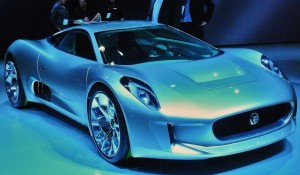
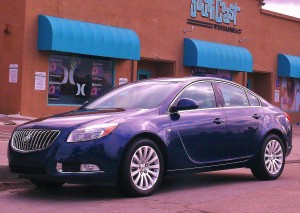
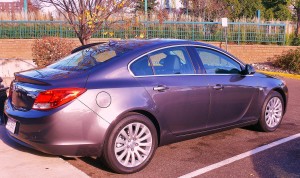
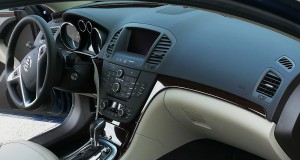
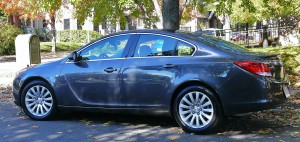
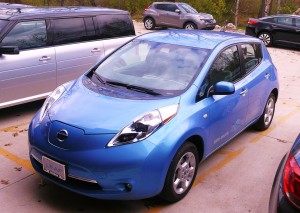
 John Gilbert is a lifetime Minnesotan and career journalist, specializing in cars and sports during and since spending 30 years at the Minneapolis Tribune, now the Star Tribune. More recently, he has continued translating the high-tech world of autos and sharing his passionate insights as a freelance writer/photographer/broadcaster. A member of the prestigious North American Car and Truck of the Year jury since 1993. John can be heard Monday-Friday from 9-11am on 610 KDAL(www.kdal610.com) on the "John Gilbert Show," and writes a column in the Duluth Reader.
John Gilbert is a lifetime Minnesotan and career journalist, specializing in cars and sports during and since spending 30 years at the Minneapolis Tribune, now the Star Tribune. More recently, he has continued translating the high-tech world of autos and sharing his passionate insights as a freelance writer/photographer/broadcaster. A member of the prestigious North American Car and Truck of the Year jury since 1993. John can be heard Monday-Friday from 9-11am on 610 KDAL(www.kdal610.com) on the "John Gilbert Show," and writes a column in the Duluth Reader.